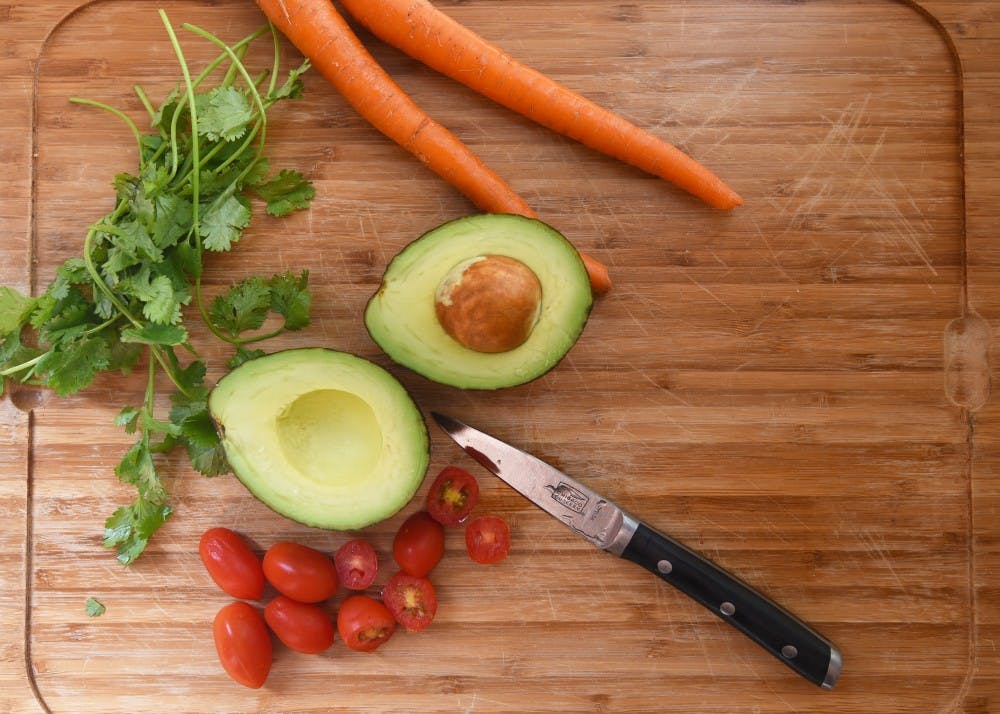They say you are what you eat — but in today's world, where there are so many different types of diets, how are you supposed to decide? Take a look at these popular dietary options if you can't keep track of what diet you should be trying next.
Omnivore Diet
Following an omnivore diet is most likely the easiest nutritional regimen to follow, and probably the most common as well. An omnivore diet has no restrictions and meat, vegetables, fish and dairy are all fair game. While following an omnivore diet doesn’t have any strict restrictions or limitations, balance is still an extremely important.
Although omnivores can eat meat, it’s important to try to stick with lean meats like chicken or turkey instead of red meat, which is high in saturated fat, according to the American Heart Association. In terms of choosing organic foods, that’s up to individual preference. An omnivore diet provides a greater level of flexibility and there are limitless options for omnivore recipes.
CAN EAT:
· Meat
· Fish
· Vegetables
· Fruits
· Dairy
· Wheat and grains
· Pretty much anything
CAN'T EAT:
An omnivore diet doesn’t have any specific dietary restrictions, but it is important to be mindful and limit the consumption of the following:
· Processed sugars
· High fat foods
· Highly processed foods
· Trans fats
Paleo Diet
The paleo diet is not an easy regiment to follow, and judgement from skeptics doesn't make it any easier. Many myths float around about this diet that simply aren’t true. You don’t have to be a millionaire to afford the food. You won't starve from small portions. You don’t eat unbalanced meals.
Truthfully, paleo is a way of getting back to the basics of what food the human body needs. Paleo diets focus on protein, fruits and vegetables. It discourages processed sugars and excessive grain intake because these foods instantly turn to sugar when digested, and our bodies don’t need that much extra sugar.
Paleo diet restrictions are most noticeable when trying to go out to eat. Strictly following the diet requires an extensive knowledge of what is in your food. Buying organic and natural food is preferred for this diet, so another difficulty can come from attempting to buy these types of food. Thankfully, there is a wide variety of grocery stores and markets in Bloomington who sell organic foods.
CAN EAT:
- Meat
- Fish
- Vegtables
- Fruits
- Eggs
CAN’T EAT:
- Wheat and grains
- Processed sugars
- Most dairy products
- Trans-fats found in hydrogenated oils
- Highly processed foods in general
Pescatarian Diet
Pescatarianism is pretty much exactly what it sounds like. Those following a pescatarian diet can eat fish and other shellfish, but eliminate standard “meat” from their diets including pork, beef, chicken and turkey.
Pescatarianism is a great dietary option for those who aren’t inclined to eat meat because it still allows for a lot of flexibility, especially in social settings when you aren’t in charge of the menu. Fish are a good source of protein as well, so eliminating meat doesn’t mean you’ll be missing out on any essential nutrients that you would be getting otherwise.
CAN EAT:
- Seafood
- Dairy
- Vegetables
- Wheat and grains
CAN'T EAT:
- Chicken
- Pork
- Turkey
- Beef
- Other meats like lamb, venison and veal
Vegetarian Diet
Being a vegetarian can be difficult at first. A lot of people do it for ethical reasons: to cut back on animal cruelty or help reduce their carbon footprint, since the expansion of the "greenhouse effect," one of the leading causes of climate change, is exacerbated by animal agriculture, according to the National Aeronautics and Space Administration.
A vegetarian doesn’t eat any meat. Seafood, pork, beef, chicken, basically the meat of anything with eyes. To start a vegetarian diet, cut out red meat and then slowly stop eating other types of meat until you completely eliminate it from your diet completely.
After cutting meat out, don’t just eat vegetarian junk food (french fries, chips, ice cream, etc.), or you won't reap the health benefits of vegetarianism. Being vegetarian can improve your health because plants are chock-full of vitamins, protein and minerals that meat doesn’t have. Broccoli actually has more protein than beef per calorie. There are so many new meat-alternative brands, that being a vegetarian is now easier than ever. If you're worried about not getting enough protein, think again.
CAN'T EAT:
- Any type of meat
- Seafood
CAN EAT:
- Vegetables
- Wheat and grains
- Meat substitutes like tofu
Vegan Diet:
Many people harbor misconceptions about veganism, but it’s really not as difficult or as radical as people make it out to be. On a vegan diet, all animal-based products, including meat, seafood and dairy are off-limits. While this does seem incredibly restrictive, there are so many substitutes for non-vegan foods now. For example, ice cream can be made with almond milk and vegan burgers are made from sweet potato and tofu. Other delicious vegan options include foods include quinoa, lentils and falafel.
Like any diet, there are many reasons to go vegan, but one the main reasons people choose to do so is because it’s sustainable — both for the earth and your body. If you're interested in becoming vegan, it's a good idea to cut products out slowly, starting with meat. Reducing your animal-product consumption by just one day a week can make a difference.
CAN EAT:
- Fruits
- Vegetables
- Grains
- Beans
- Nuts
- Seeds
- Meat substitutes like tofu
CAN'T EAT:
- Meat
- Seafood
- Dairy




